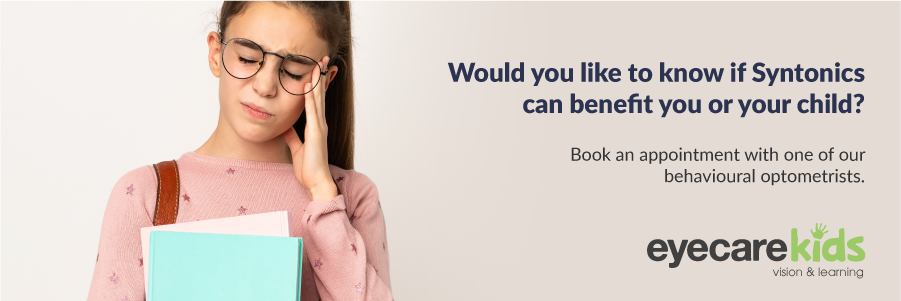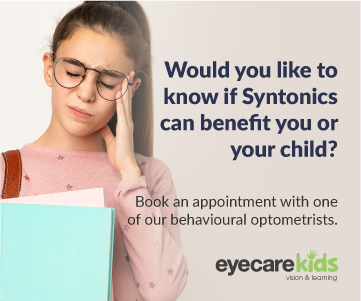Syntonics, also known as Optometric Phototherapy, is a branch of ocular science that deals with the gentle and safe application of selected visible-light frequencies through the eyes.
It is thought that by applying certain frequencies of light by way of the eyes, balance can be restored in the regulatory centres of the body’s nervous system, specifically the sympathetic and parasympathetic nervous systems. This balance is known as syntony.
Syntonics through the years
Syntonics has been used clinically for over 70 years as an alternative to traditional eye care in treating conditions like eye turns, lazy eye, reduced peripheral vision, and depth perception.
In the 1920s, Dr. Harry Riley Spitler developed the clinical science, which he called syntonics. The sympathetic system functions in actions requiring quick responses — fight-or-flight responses. The parasympathetic system functions in actions that don’t require quick response — the rest-or-repose or rest-and-digest responses. Clinical and basic research in the last decades about the impact of light on cells, tissues, blood, circadian rhythms and mood disorders has broadened the paradigm and increased the acceptance of light as a healing agent.
During the 1999 Syntonic Conference, Dan Oren, MD, PhD, a researcher for Yale University and the National Institutes of Health (NIH), proposed that 50% of the entire blood volume in the body passes through the eyes in 40 minutes and that there is a biochemical mechanism of light involving haemoglobin within the blood, allowing the eyes to be an appropriate portal for phototherapy treatment.
What does syntonics improve?
Syntonics improves vision problems through the application of selected visible-light frequencies through the eyes. When light enters the eyes, however, it doesn’t only serve vision. Some retinal nerves connect the retina directly to non-visual brain centres such as the hypothalamus and pineal gland. These centres influence electrical, chemical and hormonal balances, which affect all body functions including vision.
Years of clinical application and research have demonstrated that certain selected light frequencies applied by way of the eyes to these centres can produce beneficial results in the body.
Watch this video about Syntonics:
Syntonic therapy device: how it works
The traditional syntonic therapy device (syntonizer) uses a white-light source placed behind coloured absorption filters focused by a frosted collimating lens. Patients look down a 50cm tube at the 50mm-diameter frosted lens that appears as a glowing dot of saturated colour. The light can be steady or strobed.
Early devices used carbon arc, but the light source after 1933 was incandescent. Today it uses a vibration-series 50-watt, 115-volt bulb (powered at 145 volts to increase colour temperature) that delivers 1.4 lux at the unfiltered eye. The glass filters mounted near the bulb are 24mm in diameter and range from 4 to 8mm thick. Several newer devices use more modern sources and other types of filters.
How often should syntonic therapy be done?
The recommended frequency/duration of syntonics is a series of approximately 20 sessions, given over a four to five-week period, under the supervision of a licensed practitioner. These sessions involve viewing the appropriately prescribed light frequencies for 20 minutes, either alone or in various pairings.
Reference: https://brainworldmagazine.com/syntonics-colored-light-therapy-balance/


